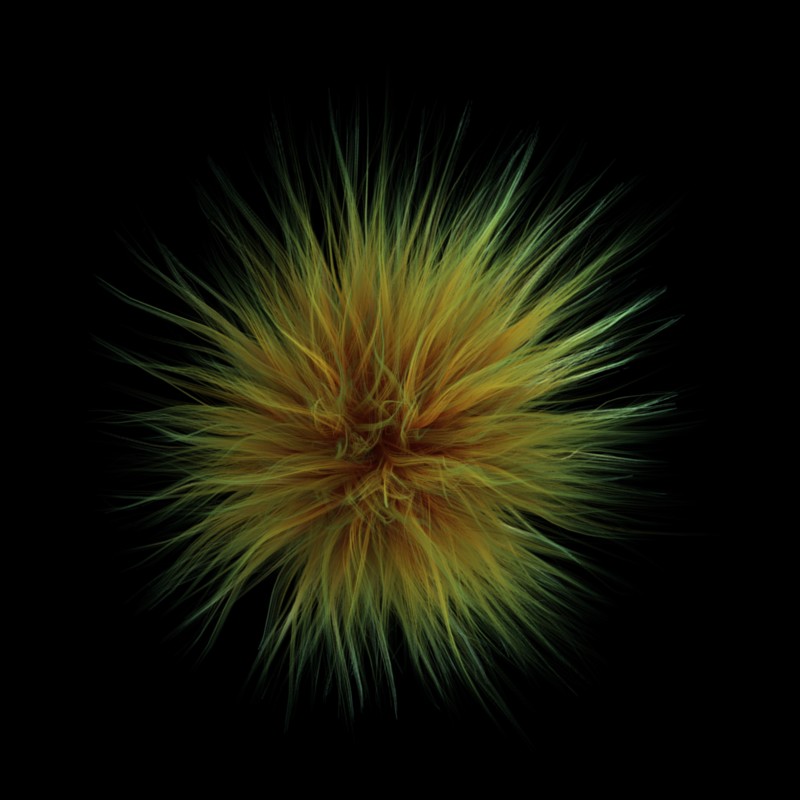Введение¶
Частицы – это множество элементов, испускаемых меш-объектами, обычно исчисляемые тысячами. Каждая частица может быть точкой света или мешем, а также быть объединённой или динамической. Они могут реагировать на множество различных влияний и сил и имеют настройку продолжительности существования. Динамические частицы могут представлять собой огонь, дым, туман и другие вещи, такие как пыль или магические заклинания.
Частицы типа «волос» представляют собой подмножество обычных частиц. Системы волос образуют кривые, которые могут представлять волосы, мех, траву и щетину.
Вы видите частицы в качестве модификатора частиц, но все настройки выполняются на вкладке «частицы».

Немного меха, сделанного из частиц.¶
Выброс частиц обычно происходит из своего меша в пространство. На их движение может влиять множество факторов, в том числе:
Начальная скорость за пределами меша.
Перемещение самого излучателя (вершины, грани или объекта).
Движение согласно «гравитации» или «сопротивлению воздуха».
Влияние силовых полей, таких как ветер, вихри или «направляющие» по кривой.
Взаимодействие с другими объектами, например объектами столкновения.
Частично разумные члены стаи (стада, роя и т. д.), которые реагируют на других членов своей стаи, пытаясь достичь цели или избежать хищников.
Плавное движение с физикой мягких тел (только системы частиц «волосы»).
Или даже ручная трансформация с помощью решёток.
Частицы могут быть отображены как:
Гало (для огня, дыма, облаков).
Меши, которые, в свою очередь, могут быть анимированы (например, рыбы, пчёлы и т. д.). В этих случаях каждая частица «отображается как» другой объект.
Кривые волос, повторяющие путь частицы. Этими кривыми волос можно манипулировать в 3D-вьюпорте (расчёсывать, добавлять, подстригать, перемещать и т. д.).
Каждый объект может содержать множество систем частиц. Каждая система частиц может содержать до 10,000,000 частиц. Определённые типы частиц (»волосы» и «с ключом») могут иметь до 10,000 дочерних элементов для каждой частицы (потомки двигаются и излучают более или менее так же, как их соответствующие родители). Размер имеющейся памяти и ваше терпение – таковы границы вашей практики.